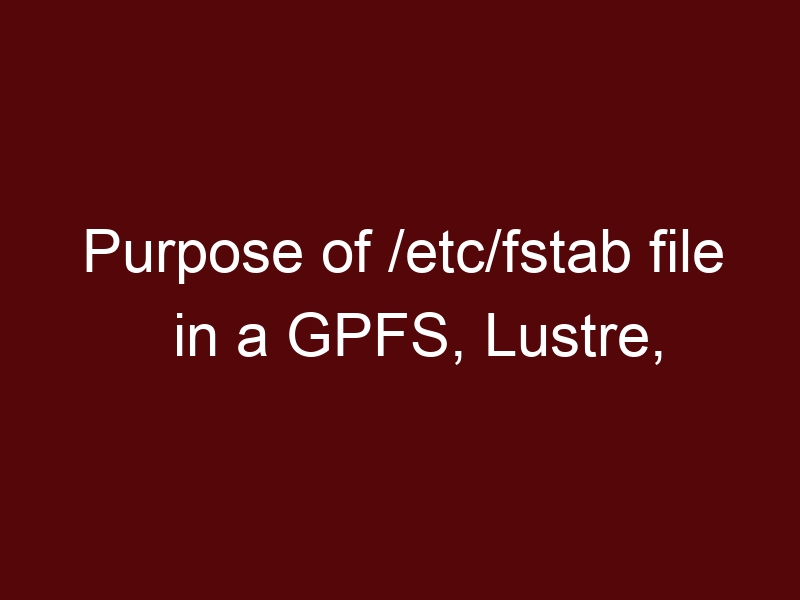The /etc/fstab file, also known as the “file systems table,” is a critical configuration file in Unix-like operating systems, including Linux. It lists the file systems and storage devices that should be mounted during the system’s boot process, along with the options for each mount. It plays a vital role in automating the process of mounting file systems and ensuring that they are consistently available across reboots.
Here’s how the /etc/fstab file is used for the ZFS, Lustre, and GPFS file systems:
1. ZFS (Zettabyte File System):
ZFS is an advanced file system with features like data integrity, snapshots, and data compression. To use ZFS with the /etc/fstab file, you typically create a ZFS pool, which consists of one or more ZFS datasets (equivalent to subdirectories). Each dataset can have its own mount options.
In the /etc/fstab file, you can specify the mount points for ZFS datasets. The syntax might look like this:
pool/dataset /mount/point zfs optionsFor example:
myzpool/mydataset /data zfs defaultsHere, myzpool is the name of the ZFS pool, mydataset is the name of the dataset, /data is the desired mount point, and defaults are the mount options.
2. Lustre:
Lustre is a high-performance parallel distributed file system often used in HPC clusters. Lustre file systems are mounted using the mount.lustre command, which can be invoked from the /etc/fstab file.
An example entry in /etc/fstab for a Lustre file system might look like:
mgmt-mds1@tcp:/lustre /mnt/lustre lustreHere, mgmt-mds1 is the metadata server’s hostname, /lustre is the exported Lustre file system, and /mnt/lustre is the local mount point.
3. GPFS (IBM Spectrum Scale):
GPFS, now known as IBM Spectrum Scale, is another high-performance file system commonly used in clusters and supercomputing environments.
To mount a GPFS file system using /etc/fstab, you typically use the mmmount command provided by GPFS. An example entry might look like:
/dev/gpfs0 /gpfs gpfs defaultsHere, /dev/gpfs0 is the GPFS block device, /gpfs is the local mount point, and defaults are the mount options.
Remember that the exact syntax and options in the /etc/fstab entries can vary based on the specific file system, version of the file system software, and distribution you’re using. It’s important to refer to the documentation for the file system in question for accurate information on how to configure and mount it using /etc/fstab.





